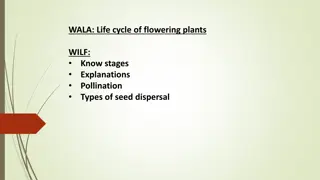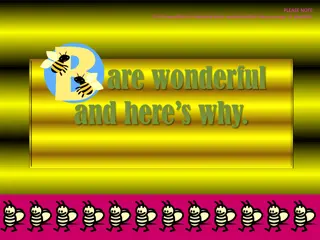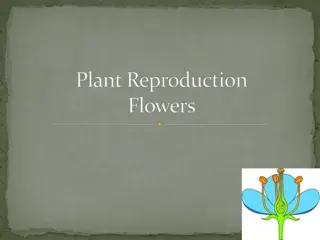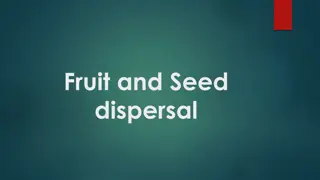Understanding Pollination: The Role of Pollinators in Plant Growth
In September, watch out for ivy bees feeding on nectar and gathering pollen from ivy flowers. Explore the significance of pollination, pollen, and pollinators in the plant life cycle. Discover how bees and other pollinators play a crucial role in food production and biodiversity. Engage in activities to spot pollen, learn bee facts, and understand the intricate relationship between flowers and their pollinators.
Download Presentation

Please find below an Image/Link to download the presentation.
The content on the website is provided AS IS for your information and personal use only. It may not be sold, licensed, or shared on other websites without obtaining consent from the author. Download presentation by click this link. If you encounter any issues during the download, it is possible that the publisher has removed the file from their server.
E N D
Presentation Transcript
September This month, look out for ivy bees feeding on nectar and gathering pollen from ivy flowers. Learn about: what pollination means and what a pollinator is. What is pollen? Pollen is like very fine dust, often yellow in colour. It is made by the male part of the flower, called the anther. What is pollination? For flowering plants to produce seeds or fruit so that they can grow new plants, they need to be pollinated. When pollen moves from the anther of a flower, to the stigma (female part) of a flower, this results in pollination. The pollinatedflower can now produce seed in the ovary. Diagram showing a bee pollinating a flower
What is a pollinator? Plants are not able to move pollen by themselves. Some flowering plants rely on wind to blow their pollen to another flower, but most rely on pollinators. Pollinators are animals that move pollen as they travel from flower to flower. Some flying insects, such as bees, are pollinators. Bees are attracted to flowers by the sweet nectar that they produce, and for the pollen which they collect to feed their developing larvae. As bees feed on nectar and pollen some pollen sticks to them and brushes off when they visit another flower. Other types of pollinatorfound in the UK include hoverflies, beetles, butterflies and moths. In other parts of the worldpollinators include birds, bats, mice and even lizards. Moths are also pollinating insects, including this poplar hawk-moth How does pollination help to provide our food? Bees are very important pollinators they help to pollinate nearly all of our plant-based food such as tomatoes, strawberries and green beans, so that the plants can produce fruits or seeds. Without bees, we would not be able to grow lots of the food that we eat. Butterflies are also pollinators: this is a common blue butterfly
Learning activity: find out some fantastic bee facts and go pollen spotting Have a close look at some flowers outside. Can you see the anthers where the pollen is made? Can you see any dusty yellow pollen grains? Anthers Wildlife expert Helen Bostock Watch RHS Wildlife Expert Helen Bostock answer these questions: How do bees know which flowers they can get pollen and nectar from? Do all bees collect nectar? How far can bees fly in a day? Cosmos flower with yellow pollen
Home | Pollinator An animal that moves pollen from one flower or plant to another e.g. bees.
Home | Pollen Dust-like grains, produced by the male parts of flowers.
Home | Nectar Sweet liquid, mainly produced in flowers.
Home | Pollinated When a flower or plant has received pollen which has resulted in the flower or plant being able to make seeds.
Home | Pollination The process of when a flower or plant has received pollen which has resulted in the flower or plant being able to make seeds.
Home | Larva (larvae is plural) The active young stage of an insect, usually referring to those insects that go through a stage where the larva looks very different to the adult e.g. caterpillar (larva) and butterfly (adult).























